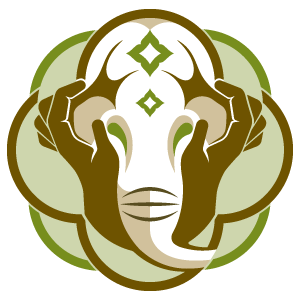Each year, organizations responsible for elephant health conduct a population census and provide health services for all elephants in human care in Chiang Mai. The 2025 event took place over the last two weeks of January and involved collaboration between the Center of Elephant Research and Health Service under the Division of Animal Welfare and Veterinary Service of the Department of Livestock Development, the Thai Elephant Conservation Center (TECC), and the Center of Elephant and Wildlife Health at Chiang Mai University. The event focused on conducting a population census, performing health checks, providing antiparasitic treatments, vitamins, and basic medical supplies to the elephants.
During the census, the team did not finalize a summary of the total number of elephants in Chiang Mai yet, but the estimate seems to be approximately same as last year, around 830-870. Most of the elephants were in good body condition. A few had minor health issues, for which the team provided recommendations and guidance to their owners and mahouts. Most of the health issues noted were dry eyes and skin. This year, the team was excited to also meet many newborn elephants in both Mae Wang and Mae Tang areas.
Two “naughty” one-year-old calves run around camp during health checks
The few cases during the beginning of the month were on the milder side. There were a couple of gastrointestinal discomfort cases, an eye irritation case, and a couple of wounds requiring therapy and care.
The owner of a middle-aged female elephant who was presenting with excessive tears from her eyes contacted the CMU Mobile Vet Team. She said that she had tried to clean the eyes and apply eye drops for a week but it was not better. Upon the examination, the elephant’s face was covered with the red dirt and excessive tears showed on both eyes. The right eye was found to have a cloudy scar on the cornea, whereas the left eye showed mild cloudy and more excessive tear. The vets cleaned the eyes then, fluorescein staining was done to ensure there were no obvious ulcers. It was suggested the elephant be kept in a shaded area, the eye rinsed several times, and a non-steroidal anti-inflammatory drug applied.
The vets using stain to check for ulcers in the eye
One of the wounds being cared for was an older wound from last month that was still requiring treatment. While the wound showed significant improvement, it had not yet fully healed, so laser treatment remained ongoing.
Visiting vet student learns to use the laser for wound treatment
The second wound was a ruptured mass on the elephant’s left elbow. The owner was unsure about wound care. The mass was large, firm, and had a thin, ruptured center. The wound was cleaned with saline and an antiseptic solution, followed by alcohol and povidone-iodine applications. Then the wound was widened with a small incision to improve drainage and cleaning. Given the risk of infection, the vet advised the owner and mahout to clean the wound regularly and apply antibiotic ointment until it healed.
The third wound was a mother elephant with bleeding at her teat. Her 1.5-month-old calf had started teething and unintentionally injured her nipple while nursing. Upon examination, a fresh wound on her right nipple was found, but the bleeding had stopped, and milk flow remained unaffected. The mother did not resist nursing on either side. The mahout was advised to clean the wound only with saline, drying it with a clean cloth, and avoiding any medication to ensure safe nursing for the calf.
Mom with teething calf
We are so grateful for the continuing efforts of the Chiang Mai University Mobile Vet Clinic Team! Help AES continue to support them as they strive to make a better future for Thai elephants, by donating TODAY at www.asianelephantsupport.org/donate



























































